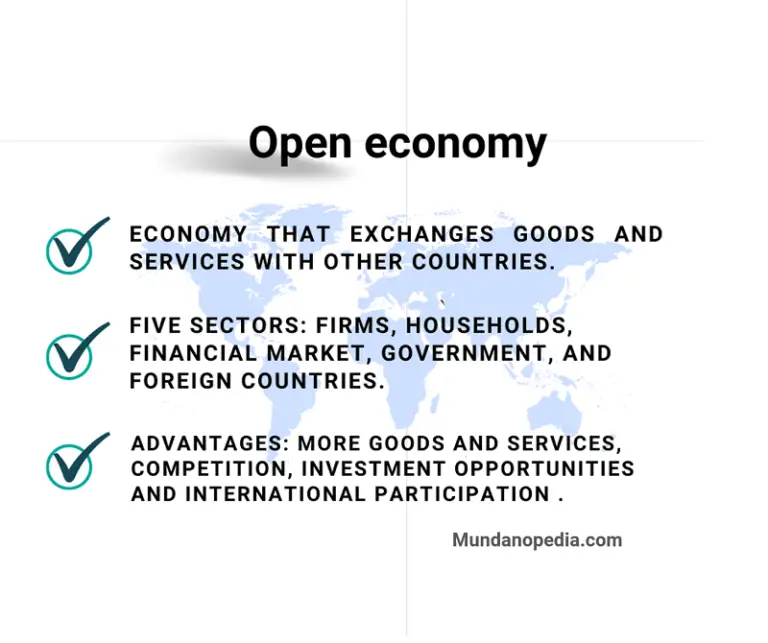Open Economy: Definition, Sectors, Advantages & Disadvantages

Open economy
An open economy has a connection or exchange of goods and services with the outside world, one that carries out international trade. It is a model of economy proposed by Erich Schneider in 1995 and is the opposite of the closed economy that has no contact with the outside.
The open economy is characterized by foreign relations and capital formation, breaking down consumption into Family (private), and government (public), in addition to exports abroad. Likewise, it focuses public and private production on the business sector, which can modify the supply in the national market with imports and exports.
Contents
Characteristics of the open economy
- It has foreign relations and also capital formation.
- It classifies consumption into private consumption (families), public consumption (government) and foreign consumption (exports abroad).
- It divides production into public and private production.
- It has five sectors that are firms, households, government, financial market, and foreign countries, each of these sectors gets income from what they offer other sectors and has expenses because of what they demand from them.
Sectors of Open Economy
Firms or businesses
The business sector comprises the public and private production sectors that are the heart of economic activity. Production sectors are the ones that make possible the flow of goods and services and the monetary flow in the system. The company has income (private and public consumption, exports abroad, and investments) and expenses (factors of production, taxes, imports, depreciation of assets, and undistributed dividends).
Households
Households receive income for the factors of production that it gives to forms or companies, and also from the government for social transfers such as pensions. It has expenses that are taxed to the government and for the consumption that it makes. Part of their income that is not spent on consumption goes to the financial market in the form of savings.
The government
The government sector receives income from the taxes paid by companies and households. The expenses come in the form of salaries to civil servants, public workers, social transfers, and the consumption it makes of the companies. The difference between their income and expenses is the public saving that goes to the financial market.
The financial market
The financial market has as income the savings of families, the government, companies, and foreign countries. And it has expenses that are the investment requests of the companies.
Foreign countries
The foreign sector is international trade and has its income from imports allocated by companies. The expenses come from exports paid to companies, the difference is the balance of the balance of payments, with the surplus or deficit as the case may be.
Advantages of an open economy
The advantages of the open economy are the following:
- Greater quantity of goods and services for consumers and increase in competitiveness and, therefore, pressure to offer the best quality of goods and services to consumers.
- Job creation by foreign industries.
- It increases investment opportunities, economic growth, and economic development.
- Participation of national production in the world economy and greater exploitation of the potential and export to the world.
Disadvantages of an open economy
- Foreign production can pose a threat to national production that doesn’t have the same resources or technological advances to compete in quality and price.
- Depending on the case, it can cause foreign dependency if imports are greater than exports and slow down the industrialization process of a country. If that country adopts easy policies and does not focus on its production, as happened with Venezuela in its years of prosperity.
See also